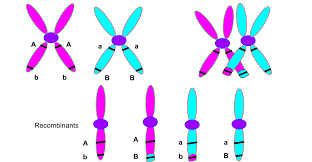ASSERTION-REASON:-
In the following questions, a statement of assertion (A) is followed by a statement of reason (R).
(1) If both Assertion & Reason are true and the Reason is the correct explanation of Assertion then mark (1)
(2) If both Assertion & Reason are true but the Reason is not correct explanation of the Assertion then mark (2)
(3) If Assertion is true statement but Reason is false, then mark (3)
(4) If both Assertion and Reason are false statements, then mark (4)
_______________________________________________________________________
1. A:- Meiosis does not occur in haploid cells
R:- Haploid cells do not form gametes
2. A:- M phase is also known as equational division.
R:- In mitosis, number of chromosomes in the parent and the progeny is the same.
3. A:- The chromosomes are spread through the cytoplasm of the cell in the metaphase.
R:- Complete disintegration of the nuclear envelop takes place in the metaphase.
4. A:- It is essential for a cell to divide to restore the nucleo-cytoplasmic ratio.
R:- Cell growth disturbs the nucleo-cytoplasmic ratio.
5. A:- Detailed study of chromosome morphology is done at metaphase.
R:- At metephase, chromosomes arrange at equational plate.
6. A:- Meiosis introduces new combination traits in the progeny.
R:- Meiosis involves crossing over.
7. A:- During anaphase-I of meiosis non-homologous chromosomes separate.
R:- There is splitting of centromere during anaphase-I
8. A:- In anaphase stage chromatids move to opposite poles.
R:- Anaphase is the shortest phase.
9. A:- Meiosis induces new combination of traits in organisms.
R:- Crossing over occurs between sister chromatids of chromosome.
10. A:- Cell division does not occur in asexually reproducing cells.
R:- Cell division is always equational.

Cell cycle is the series of events that take place in a cell leading to its growth, replication, and division into two daughter cells. It consists of interphase (where the cell grows and prepares for division) and the mitotic phase (where the cell divides).
Cell cycle has two main phases:
-
Interphase: This is the phase of growth and preparation for cell division and includes three sub-phases: G1 (cell growth), S (DNA replication), and G2 (preparation for mitosis).
-
Mitotic Phase (M phase): This phase includes mitosis (nuclear division) and cytokinesis (cytoplasmic division), resulting in two daughter cells.